Internal storage is one of the most important parts of your Mac computer. This is where your operating system and all software reside. Due to any crashes within your hard disk drive (HDD) or flash drive (SSD) it can lead to a damaged Mac hard drive, or worse – data loss.
Periodically checking the health of your hard drive is a perfect precaution against data loss or unexpected software crashes. It's no secret that hard drives and especially flash drives have a limited number of write cycles, whether they are internal or external storage.
However, it's best to notice any strange issues right away before you lose data or even access to your Mac. Bee Problems with your hard drive will affect your Mac start randomly freezing, for example while trying to move files.
Another common problem is, for example, that your Mac will give an error message on files that you try to consult, files that you could previously consult without any problems. There are of course several concerns about a failing hard drive.
Luckily it has Apple a built-in tool, which is able to check the hard drive and repair minor damages in your storage. Moreover, this method works on both internal and external storage.
There is a method to repair your startup disk by file system checker. In this article, I describe the methods how to check the health of your hard drive and try to repair some bad sectors and other problems.
Check Mac hard drive with Disk Utility
As mentioned earlier, you should not wait for problems to arise. To monitor the current status of your hard drive, and to avoid data loss or performance degradation, it is recommended to check your hard drive periodically.
Apple has an application built into macOS called Disk Utility. Press Command and Spacebar to open Spotlight, then type in Spotlight: Disk Utility. Once you have launched the Disk Utility application, select your internal or external hard drive from the list. Click on Disk first aid and then “Execute”.
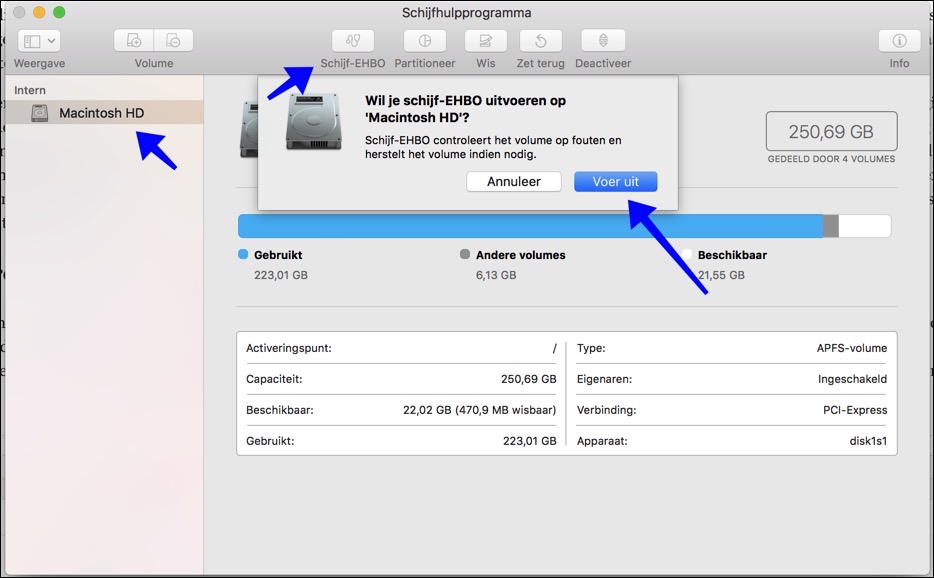
If you try to check the status of the boot disk, another warning will appear stating that you are trying to check the boot volume. Please note that your apps may become less or unresponsive during this process. After the check, everything will respond as usual.
You are about to apply Disk First Aid to the volume from which the computer is booted. To run Disk First Aid, the boot volume must be locked. This causes programs to become unresponsive during this operation. This is normal and the programs will become responsive again once the operation is complete.
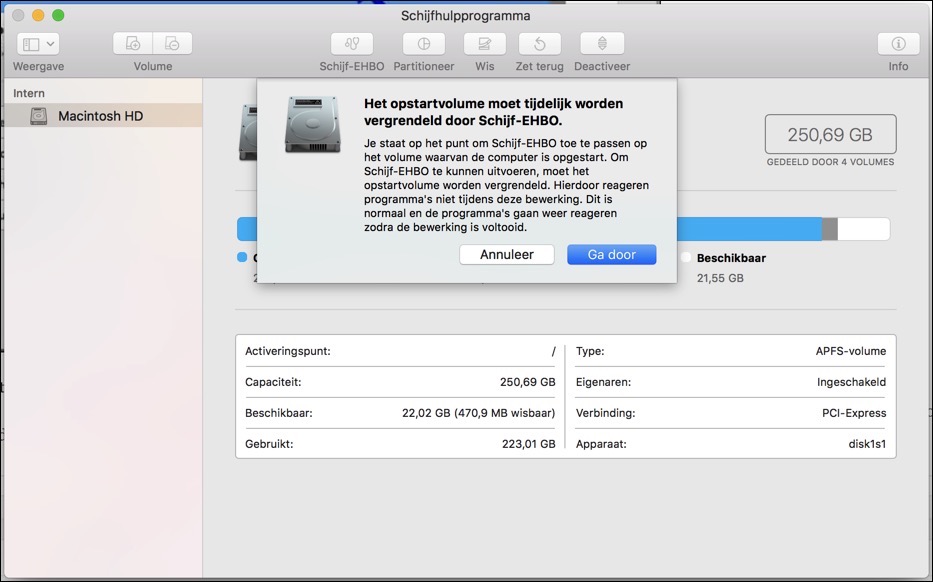
When the First Aid function check has finished its work, the message will appear with the result: your hard drive is OK, otherwise click on Repair disk.
You can also repeat the first aid procedure again until you get the result that your hard drive is fine. Sometimes Disk Utility is unable to repair a booted drive, in this case follow the next method.
Check startup disk with Mac recovery mode
If you find yourself in a situation where Disk Utility is unable to repair your hard drive when it starts up, there is another way to access Disk Utility without your Mac to boot.
However, it is advisable to backup your storage first, the easiest thing would be to time Machine to use. If you back-up created, shut down your Mac and hold down Option (Alt), Command, and R while you start your computer. Hold down until it Apple logo or the spinning globe appears and select Disk Utility in the macOS Utilities window.
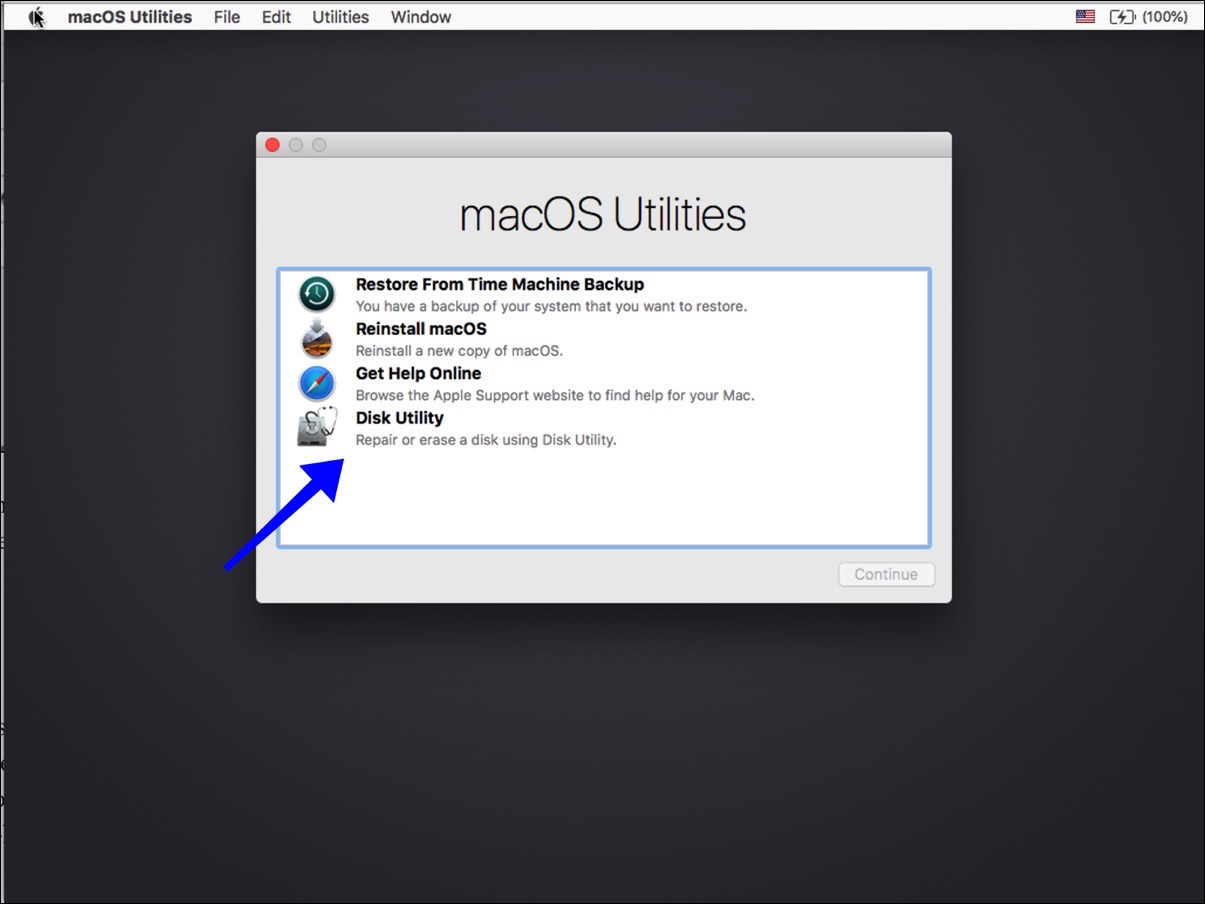
(unfortunately the example is in English, my Mac wouldn't start Disk Utility in Dutch :-))
Further, repeat the process to check your hard drive and select one of the connected hard drives from the list on the left sidebar. Then click the First Aid button in the top center of the window. You will be asked to confirm your action, click Execute. Finally, click Repair Disk when prompted to automatically attempt to repair your hard drive.
As mentioned above, checking the health of your hard drive is a good prevention against unexpected problems and data loss, but you should not forget to make backups periodically. There may come a time when your hard drive fails and you will have no backup, avoid unexpected problems.
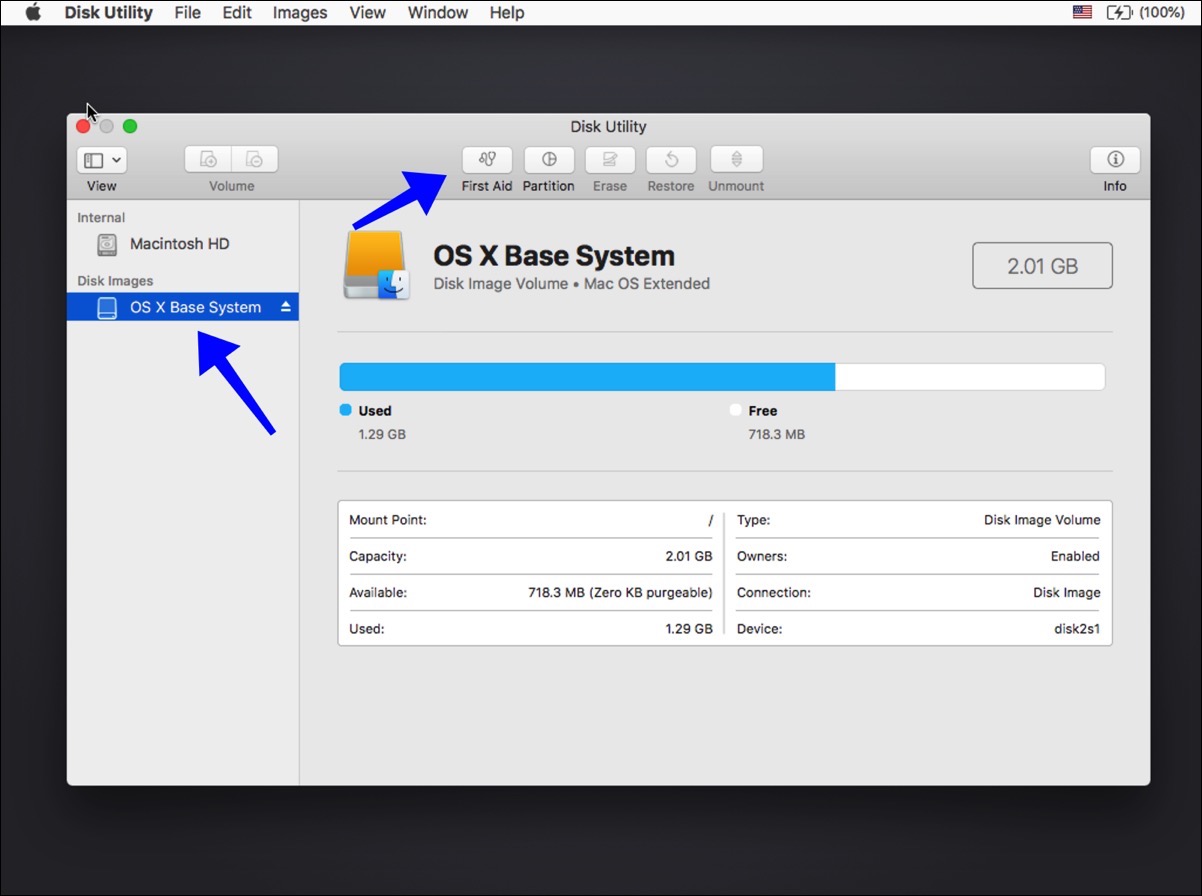
Start Mac in single user mode or detailed mode
The last, but probably the most efficient method is to boot your Mac into “single user mode” and use specific command fsck.
That's a shortcut to start the file system checker. To start, whenever possible, create a backup and then turn off your Mac. To enter this mode, hold Command and S button immediately after hearing it startup sound “chimes”.
If you have managed to enter single-use mode, you will notice that a lot of white text appears in the black display on your screen. Be patient, this boot may take some time, but once the boot is complete, each new line will be prepared with “localhost”, type the following text “fsck -fy” and press Enter to execute the command.
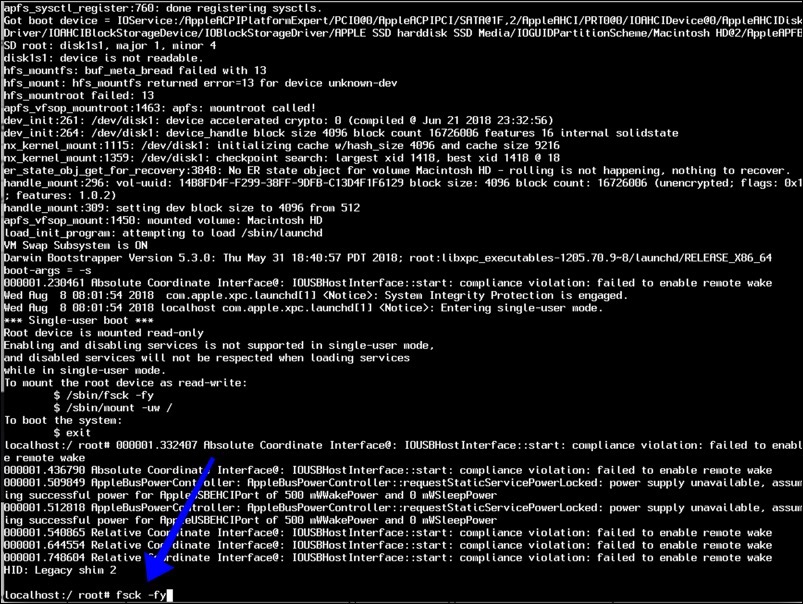
When the hard drive check process is complete, you should receive a notification that the volume appears to be fine. Otherwise, you will need to repeat the hard drive check until you receive this message.
Finally, type reboot and press Enter to exit single-use mode. Once your Mac has fully booted up, it is recommended that you check the hard drive again through Disk Utility to ensure everything is working properly.
Check Mac hard drive status with CleanMyMac
CleanMyMac can take a lot of work off your hands, as I mentioned earlier in this instruction it is important to check your hard drive periodically. By CleanMyMac you can use two options to prevent status problems of your hard drive. Repair disk permissions, this allows you to fix programs that don't start properly, and fix permission issues when moving or deleting files.
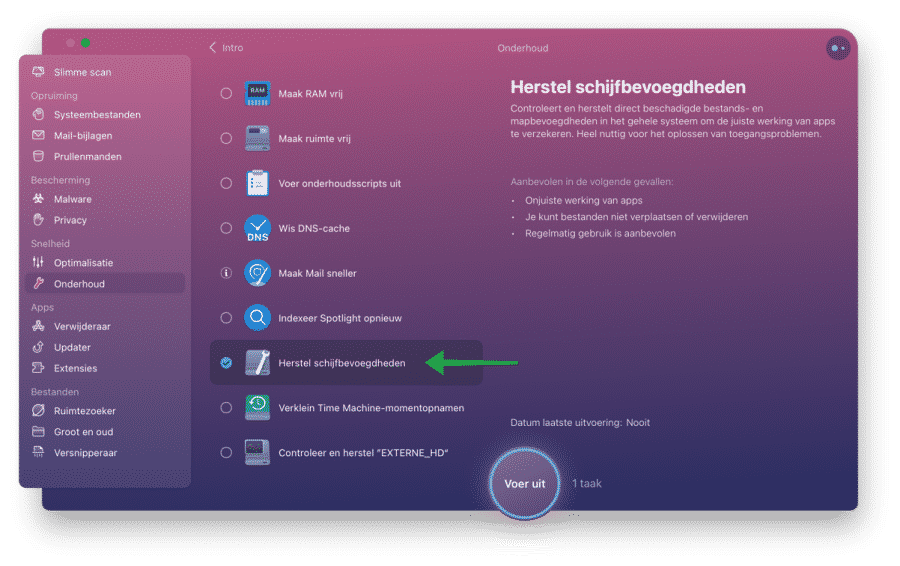
To check your hard drive periodically, CleanMyMac includes the “Check Startup Disk” option. If problems occur on your hard drive, CleanMyMac will advise you how to solve the problem.
Hopefully this how-to has helped you check your hard drive on a Mac. Good luck!
